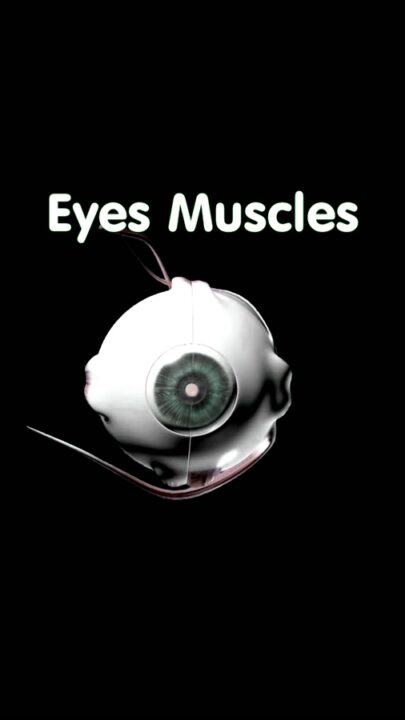How do Oculomotor muscles move eyeballs? How do eye muscles work?
Lateral Rectus – move eyes to the right
Medial Rectus – move eyes to the left
Inferior Rectus – move the eyes down.
Superior Rectus – Move eyeball up.
Superior Oblique – squeezing eyeball to see near and diagonal movement.
Inferior Oblique – squeezing eyeball to see near and eye movement by diagonals.
Watch in the video how exactly each of them moves their eyes.
Strengthening Eye Coordination with eye exercises
Explore proven eye exercises and techniques that target your oculomotor muscles, enhancing their strength and flexibility. These exercises will boost eye coordination and enhance your eye’s ability to focus with the eye training course Eyesight Academy.
How to train oculomotor muscle with eyesight Academy course to improve eyesight

Unlock the Power of Clear Vision with Eyesight Academy’s Oculomotor Muscle Training Course! Discover the fascinating connection between your oculomotor muscles and your visual acuity. The eye training course will help you understand the Oculomotor Muscle’s role in vision. You will train the muscles responsible for eye movements and visual coordination. Learn how they impact your vision and overall eye health.
Enhancing your Visual Acuity
Uncover strategies to improve visual acuity and clarity. How do Oculomotor muscles move eyeballs? The eyesight academy course provides a range of exercises designed to sharpen your focus, expand your field of vision, and develop better depth perception.
Relaxation and Eye Fatigue Reduction. Discover invaluable relaxation techniques to reduce eye strain and alleviate eye fatigue caused by extended screen time or intense visual tasks.
Developing Healthy Eye Habits
Learn practical lifestyle adjustments to boost your eye health. We’ll guide you on proper eye care routines, nutrition for eye health, and effective ways to protect your vision.

How Oculomotor Muscles Move Eyeballs: A Fascinating Glimpse into Vision Control
Our eyes are incredibly complex, versatile organs, allowing us to perceive the world around us with precision and detail. Behind the scenes of our visual experience are a group of muscles known as the oculomotor muscles. These muscles play a crucial role in moving our eyeballs, enabling us to track moving objects, focus on different points, and explore our surroundings. In this article, we’ll delve into the fascinating mechanics of how oculomotor muscles work to move our eyeballs.
Understanding the Oculomotor Muscles
The oculomotor muscles are a group of six muscles located around each eye. They work together in pairs to control the movements of the eyeball in various directions. These muscles include:
- Medial Rectus Muscle: This muscle moves the eye inward, allowing us to look towards our nose.
- Lateral Rectus Muscle: Located on the outer side of the eye, it moves the eye outward.
- Superior Rectus Muscle: Positioned above the eye, it primarily moves the eye upward.
- Inferior Rectus Muscle: Situated below the eye, it moves the eye downward.
- Superior Oblique Muscle: Located on the upper side of the eye, it helps rotate the eye downward and away from the nose.
- Inferior Oblique Muscle: Positioned on the lower side of the eye, it aids in rotating the eye upward and away from the nose.
Eye Movements Controlled by Oculomotor Muscles
- Saccadic Movements: These are rapid, jerky eye movements that occur when we shift our gaze from one point to another. They are essential for quickly scanning our visual environment, reading, and following moving objects.
- Smooth Pursuit Movements: These are slow, continuous eye movements that allow us to track moving objects smoothly. For example, when watching a bird in flight, our oculomotor muscles work to keep our gaze fixed on it.
- Vergence Movements: Vergence movements involve both eyes moving in opposite directions to adjust our focus when switching between near and far objects. This ensures that the image is correctly projected onto the retina for clear vision.
- Convergence and Divergence: Convergence refers to the inward movement of both eyes to focus on a nearby object, while divergence is the opposite, where both eyes move outward to focus on a distant object.
The Brain’s Control Center
The oculomotor muscles are under the precise control of the brain. The brain’s superior colliculus, located in the midbrain, plays a vital role in initiating saccadic eye movements. The frontal eye fields and parietal cortex are responsible for higher-level control of eye movements, allowing us to plan and execute complex visual tasks.
Coordination for Depth Perception

One of the remarkable functions of oculomotor muscles is their contribution to depth perception. When we shift our gaze from a near object to a far one, our brain processes the different angles at which our eyes converge or diverge. This information helps us perceive the relative distance between objects, allowing for three-dimensional vision.
Disorders and Treatment
Disorders affecting the oculomotor muscles can lead to conditions such as strabismus (misalignment of the eyes), nystagmus (involuntary eye movements), and other visual impairments.
Oculomotor Muscles at Work: The Artistry of Eye Movements
In conclusion, the oculomotor muscles are unsung heroes of our visual system, orchestrating the intricate dance of our eyeballs to provide us with a rich and dynamic perception of the world. These muscles work seamlessly to allow us to explore our surroundings, track objects of interest, and experience the wonders of depth perception. Understanding their function offers a deeper appreciation of the complexity of human vision.
- Why Your Eyeball Feels Weird: Eye Elongation and Eye Muscle Tension
- Is Your Eyesight Getting Worse Quickly? The Real Reason Might Surprise You
- How to Improve Eyesight at Home: 5 Eye Exercises and Relaxation Tips
- 7 Easy Ways to Stop Eye Twitching Before It Drives You Crazy
- Eyesight Academy to Get Better Eye Health Naturally

